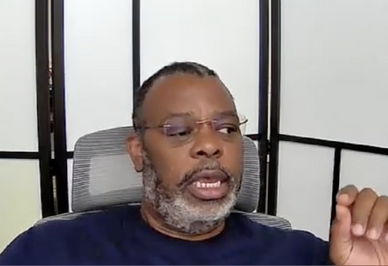Remote Blood Pressure Monitoring Program Delivers Flexible Care Options & Increased ROI
For George Fahnbulleh, Co-Owner of Gold Canyon Internal Medicine, the name of the game is implementing systems that do at least one of the following:
- Improve patient compliance (driving better patient outcomes)
- Streamline workflow
- Drive revenue/ROI
Watch the 20 minute-interview here:
And implementing a remote blood pressure monitoring program with the QardioArm device ended up doing all three.
A win-win-win.
Improved Care Options & Optimized Efficiency
As a former software engineer and data scientist, George runs the practice with systems-driven foresight. With its clinical validation, ease-of-use, and advanced data sharing, QardioArm met George’s rigorous standards for devices offered by the practice.
Identified Need
Being a Medicare-driven practice, remote BP monitoring was a no-brainer. Of their 2,700 patients, 82% are 65+ and on Medicare. Nearly 60% of those qualify for remote monitoring, meaning they either have diabetes, hypertension, and/or congestive heart failure.
Remote monitoring empowers patients to manage their heart health, getting a medically precise reading anytime, anywhere, in about 20 seconds. This is a major benefit for older patients in need of more consistent monitoring without needing an in-person visit.
Additionally, with Arizona being a “snowbird state,” Gold Canyon Internal Medicine has a significant number of patients who travel for large portions of the year. QardioArm allows patients to continue proactively monitoring.
“It’s worked even for the patients who are snowbirds. They’re still being monitored. We’re still getting paid. We’re still providing them with good care.”
Improved Workflow
Before partnering with Qardio, Gold Canyon Internal Medicine was leveraging a 3rd party company to help with chronic care management, requiring excessive work and overhead.
“My goal is to make it as easy as possible for our care providers to do their job by providing technology where and when I can.”
George recognized that a remote BP monitoring program with a device like QardioArm would benefit both the patients and the practice. After hiring a retired nurse to work part time as the dedicated program owner, they began enrolling patients in the program immediately. Having clinical experience means she knows how to triage the patients, advise them, and send them to their primary care doctor when necessary.
Additional Revenue Stream
Alternative revenue streams are huge for small practices. After confirming that QardioArm was “good medicine,” George identified that it would function as an additional revenue stream.
Despite the program being quite young, the pandemic severely limiting new patient enrollment (they prefer to enroll patients in person) as well as some insurance payers not offering coverage of the device, they have still managed to drive ROI and create a consistent monthly revenue stream.
George notes, “for every remote monitoring patient we add, we’re averaging about $93 per patient per month in reimbursement.” Including their initial investment covering the cost of the QardioArm device and QardioMD platform, the practice brings in about $1116 per patient, per year, with an ROI of 302%.

$93 per patient per month in reimbursement

$1116 per patient, per year in reimbursement

302% ROI per patient per year from reimbursements
Insights for Seamless Implementation
Looking for guidance on how to run a remote blood pressure monitoring program? Here are a few tips from George:
Have a dedicated program owner. George says, “When everyone is responsible, no one is responsible.” Additionally, understand that your practice administrator may not be motivated to improve patient outcomes and generate a consistent revenue stream. You can either change that or choose a more suited owner.
The physician has to make the sale. The patients chose your practice specifically for the physician. They are
most likely to enroll in the program if advised by their trusted doctor.
Reiterate the urgency of any risks involved with choosing not to remote monitor.
Implement a clear triage system so that the program owner can identify who is: low risk, medium risk, high risk, and noncompliant. Note: Still engage with the patients who are regularly measuring, to retain their compliance.
Leverage QardioArm data when referring patients to a specialist, as it’s more helpful to have real data on hand.
Want to Kickstart Your Remote Blood Pressure Monitoring Program with Qardio?
Acknowledgment: Special thanks to George Fahnbulleh,
Co-Owner of Gold Canyon Internal Medicine.
